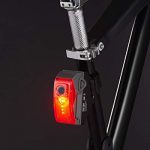One of the most important questions to ask yourself is what kind of terrain will you be riding on most often? If you are going to be riding cross-country maybe a mountain bike with full suspension is not warranted and a rigid frame will best suits your needs. However, if you are riding downhill a full suspension could be right up your alley.
Set your budget and stick to it. Consider buying the best bike you can afford within your budget. Many riders suggest that if you have less than 700 dollars to spend on a bike you may want to consider a rigid because full suspension bikes are more expensive. However, you might consider buying a used full suspension bike at a good price on a classifieds site in mountain biking forum.
If you determine that a full suspension mountain bike is what you need and want then to examine the framework for different designs. Single-pivot, horst-link and sweet-spot are some popular designs and each has its advantages and disadvantages. The best way to really understand the difference is that going to a few bike shops and test ride the different designs. The bike shop will be more than happy to explain and point out the pros and cons of each design.
Remember that full suspension bikes are heavier than rigid bikes. Full suspension frames are a little heavier and have more parts than hardtails so be prepared to pedal around a bit more weight on the road.
Read some of the online forums to determine what other riders do not like about their bikes. You can learn much from the views of the other driver.
Do not forget to factor in maintenance costs in the equation. Full suspension bikes takes a bit more maintenance and the DIY guy who will have some additional tools.
Finally, test ride bikes as you can before you buy. Do not forget to test ride a complete mountain bike with front suspension and/or rear shock locked out.
